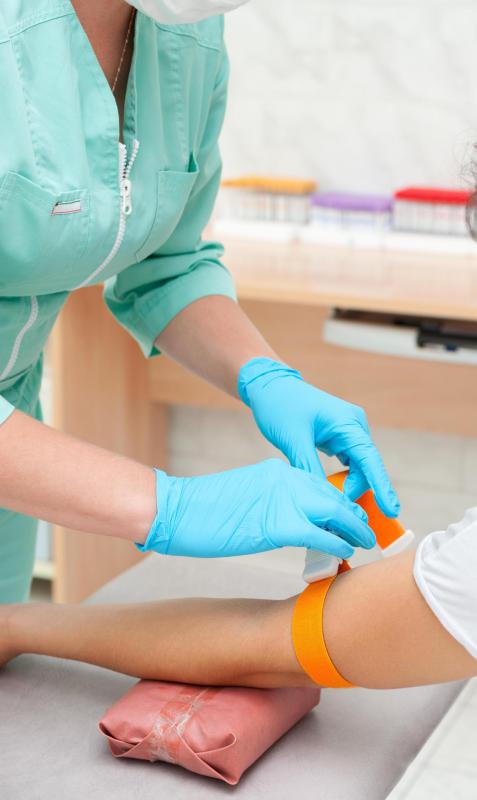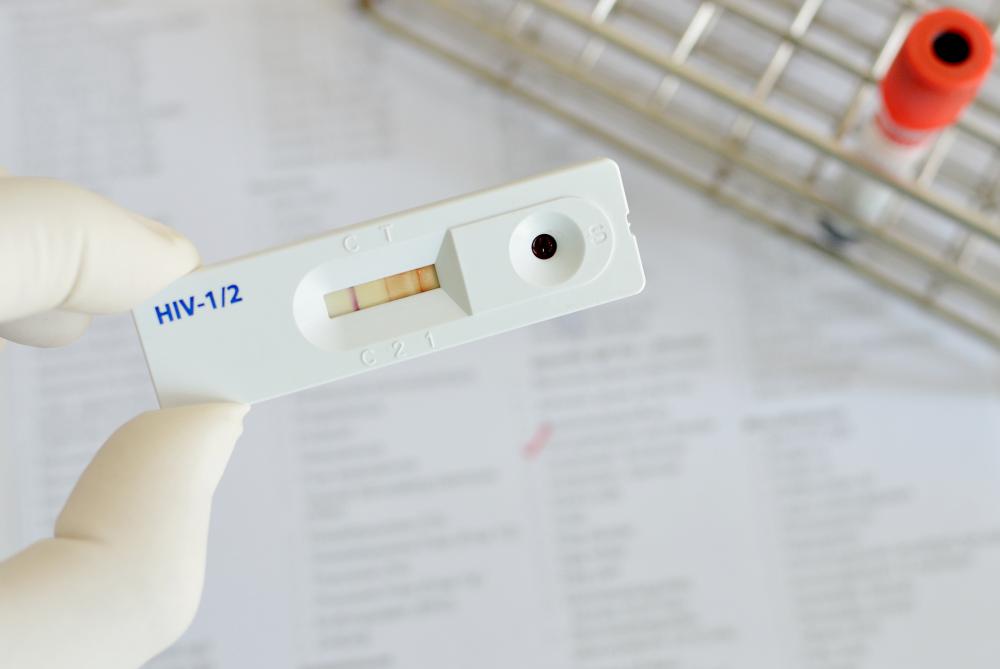At WiseGEEK, we're committed to delivering accurate, trustworthy information. Our expert-authored content is rigorously fact-checked and sourced from credible authorities. Discover how we uphold the highest standards in providing you with reliable knowledge.
What Are the Steps in the ELISA Procedure?
The ELISA procedure begins in the clinic, with a blood sample being taken from the patient. A number of steps are then followed using the ELISA test kit in the laboratory. The test will detect the presence of antibodies or antigens to a disease, such as HIV, in the blood. The steps include addition of various substances and washing and results are generally measured by a color change.
The enzyme-linked immunosorbent assay (ELISA), which is also referred to as the enzyme immunoassay (EIA), is utilized as a diagnostic test. It is most well known as a diagnostic test for HIV. The test plate usually consists of 96 small wells into which a specific antigen is immobilized. If the antibody is present in the serum sample, it will bind to the antigen, allowing detection via the various steps of the ELISA procedure.

The first step in the ELISA procedure is to obtain a sample from the patient. This is done by a nurse, under sterile conditions. The blood is usually taken from a vein in the arm or hand. A tourniquet is placed on the arm to swell the vein and make the procedure easier and the skin is cleaned where the needle will be inserted. A small prick may be felt as the needle goes in and the blood will be collected in a sterile tube.

After the blood sample is taken, it is transferred to the lab where the rest of the ELISA procedure will be performed by a lab technician. The blood sample is first added to the wells of the ELISA plate. If the specific antibody is present, it binds to the antigen. The plate is then washed, using a buffer, to remove unbound antibodies.
A second antibody, normally of animal origin, which has an enzyme that is attached to it, is then added, which will bind to the antibody-antigen complex. The plate is again washed, to remove excess. The enzyme is color-reactive when a substrate is added at the end of the ELISA procedure. It is the measurement of the degree of color change that gives the result.

The ELISA procedure needs to be followed carefully to avoid false results. In most ELISA plates a positive and negative control is included, to minimize such false results. When testing for HIV, a positive result will usually be followed up by a second, confirmatory, test, often of a different type, such as a Western Blot.
AS FEATURED ON:
AS FEATURED ON:















Discuss this Article
Post your comments